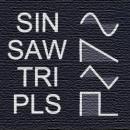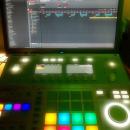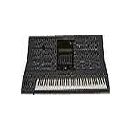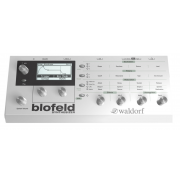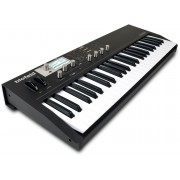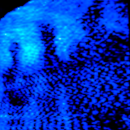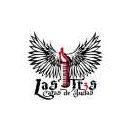Pues Creeme que no te lo digo por gusto. Las muestras son las mismas muestras que ha estado usando toda la vida el Microwave (Generadas por síntesis aditiva).
SOlo que en el Blofeld han ampliado la resolución que en los Microwave eran de 12 bits y ocupaban 64 sample words y ahora ocupan 128 sample words usando la misma técnica de 64 armónicos por onda. Por eso ocupan ahora mucha más menoria. Y te pongo un link de un calaborardor de Waldorf que conoce a Stefan Stensel que corrobora mis palabras. Creeme que esto es así porque es la misma técnica que ha estado usando waldorf para sus sintes wavetable. Jamás han usado samples PCM ni nada por el estilo para sus osciladores.
http://acapella.harmony-central.com/sho ... p=28482922
EL post es de QWave
----------------------------------------------------------------------------------------
Este es el texto:
On the PPG wave and all the MicroWave series synths there was a max of 33 different Waveshapes used in the wavetable. The 64 possible positions inside this table were done by interpolating. So you only could get a max of 64 different waveshapes from a single table. This is where the number of 64 slots you name came from. There is absolutely no further interpolation in between these 64 different waveshapes of a single wavetable.
On the Blofeld we got a maximum of 64 different waveshapes inside a wavetable. I got this from the R&D boss and main programmer of Waldorf Music: Mr Stefan Stenzel.
But on the Blofeld you can reach 128 different waveshapes just by using the Pulsewidth know. And due to the better interpolation you can get even more in between waveshapes. So you get nearly endless numbers of waveshapes. This is the very same technique as used on the Waldorf Q and microQ for the Alt waves.
In fact the Alt waves and the wavetables of the Blofeld are stored as waveshapes made from additive 64th harmonic 12 bit precision per harmonic waveshapes. Each waveshape cycle is 128 sample words long (PPG wave and the WAVE/Microwaves only used 64 sample words). The PPG waves had to be expolated to get this way better quality then the original PPG wave and Waldorf pre-Blofeld wavetables.
Use the Pulsewidth knob and tell me, are there 64 or 128 different wavetables? You will get 128 for sure.
The number of slots actually used/filled to make a table does not matter that much. It is the number of positions inside the range of a wavetable that gives you the variety and the smooth sweeping. Or did you know that some of these wavetables only us 5 or less waveshapes and all other waveshapes you hear are just interpolated? Interpolation is THE thing here.
I know Holger "Tsching" Steinbrink for many years. So just give him my answers and ask him to talk about them with the main Waldorf developer Stefan Stenzel. And lets wait what the truth is. Everybody might do a little mistake.
SOlo que en el Blofeld han ampliado la resolución que en los Microwave eran de 12 bits y ocupaban 64 sample words y ahora ocupan 128 sample words usando la misma técnica de 64 armónicos por onda. Por eso ocupan ahora mucha más menoria. Y te pongo un link de un calaborardor de Waldorf que conoce a Stefan Stensel que corrobora mis palabras. Creeme que esto es así porque es la misma técnica que ha estado usando waldorf para sus sintes wavetable. Jamás han usado samples PCM ni nada por el estilo para sus osciladores.
http://acapella.harmony-central.com/sho ... p=28482922
EL post es de QWave
----------------------------------------------------------------------------------------
Este es el texto:
On the PPG wave and all the MicroWave series synths there was a max of 33 different Waveshapes used in the wavetable. The 64 possible positions inside this table were done by interpolating. So you only could get a max of 64 different waveshapes from a single table. This is where the number of 64 slots you name came from. There is absolutely no further interpolation in between these 64 different waveshapes of a single wavetable.
On the Blofeld we got a maximum of 64 different waveshapes inside a wavetable. I got this from the R&D boss and main programmer of Waldorf Music: Mr Stefan Stenzel.
But on the Blofeld you can reach 128 different waveshapes just by using the Pulsewidth know. And due to the better interpolation you can get even more in between waveshapes. So you get nearly endless numbers of waveshapes. This is the very same technique as used on the Waldorf Q and microQ for the Alt waves.
In fact the Alt waves and the wavetables of the Blofeld are stored as waveshapes made from additive 64th harmonic 12 bit precision per harmonic waveshapes. Each waveshape cycle is 128 sample words long (PPG wave and the WAVE/Microwaves only used 64 sample words). The PPG waves had to be expolated to get this way better quality then the original PPG wave and Waldorf pre-Blofeld wavetables.
Use the Pulsewidth knob and tell me, are there 64 or 128 different wavetables? You will get 128 for sure.
The number of slots actually used/filled to make a table does not matter that much. It is the number of positions inside the range of a wavetable that gives you the variety and the smooth sweeping. Or did you know that some of these wavetables only us 5 or less waveshapes and all other waveshapes you hear are just interpolated? Interpolation is THE thing here.
I know Holger "Tsching" Steinbrink for many years. So just give him my answers and ask him to talk about them with the main Waldorf developer Stefan Stenzel. And lets wait what the truth is. Everybody might do a little mistake.

